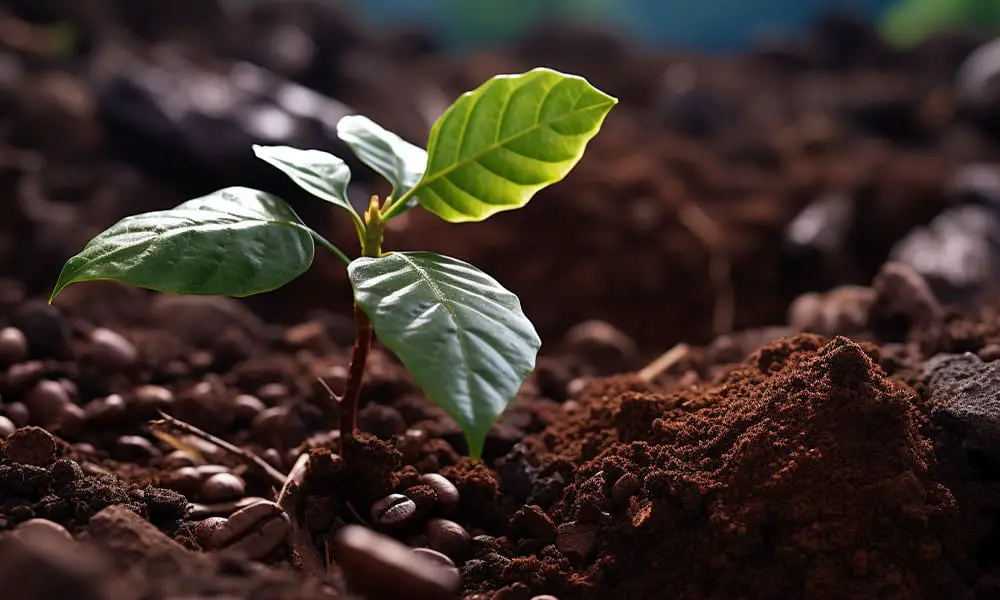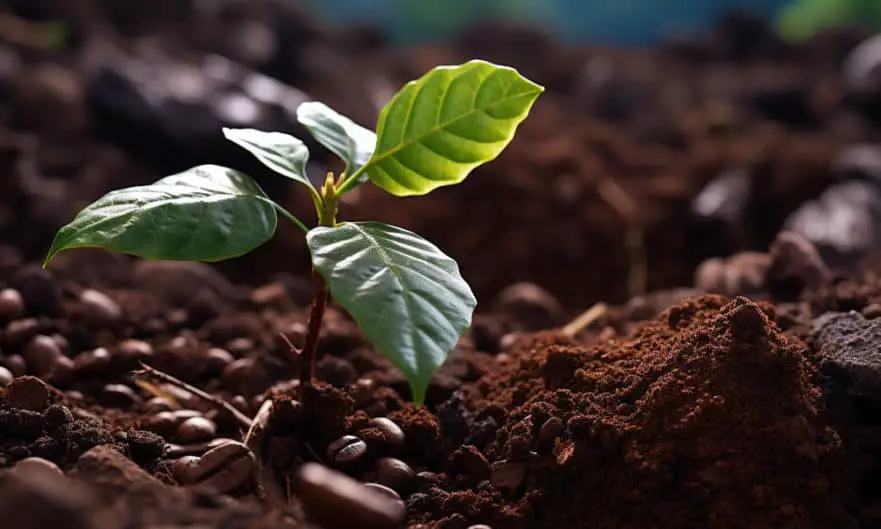
Coffee with an earthy flavor profile is both fascinatingly complex and distinctively evocative. The term earthy conveys a combination of tastes and aromas that connect back to the ground itself – damp soil, bedrock, fallen leaves.
An earthy coffee captures natural elements through its rich body, nuanced spice notes, tobacco-like undertones, dried fruit hints, subtle minerality, and rounded acidity.
The overall flavor impression mirrors the nurturing, stabilizing sense imparted by the earth. Earthiness develops in coffee beans as a result of growing conditions, processing method, roast level, storage factors, and inherent varietals.
While an earthy flavor can divide coffee fans, truly appreciating these coffees creates an experience akin to taking a mindful walk-through fertile woods after the rain. Their contemplative spirit rewards those looking to be transported to the serene essence of Mother Nature herself.
This is an article with 5 lists, as it was the easiest way to explain this somewhat complicated subject as it relates to coffee, so let’s now go more in depth so you have a better idea on what the experience will be like.
5 Factors for Development of an Earthy Coffee Flavor
The earthy notes in coffee come from several sources during the cultivation and post-harvest processing of the beans. Growing conditions such as the mineral content and microclimate of the soil can directly influence the flavor profile.
However, in the end, the development of an earthy flavor in coffee can be attributed to 5 key factors that occur during the cultivation and processing stages:
1. Growing Conditions
The soil composition and microclimate in which coffee is grown play a significant role in influencing its flavor profile. Coffee cultivated in rich, volcanic soil tends to exhibit a bolder and earthier taste. Additionally, shade-grown coffee, which is cultivated under a forest canopy, can also develop earthier notes.
2. Processing Method
The way coffee beans are processed can also impact the final flavor. Natural or dry-processed coffees, which are dried with the fruit flesh intact, tend to contribute more earthiness compared to the washed processing method, which involves removing the fruit before drying.
3. Roast Level
The degree of roasting affects the flavor profile of coffee. Darker roasts tend to develop more earthy notes as complex sugars caramelize, while lighter roasts preserve brighter, fruity notes.
4. Coffee Varietal
Different coffee varieties can exhibit varying flavor profiles. For instance, coffee from Sumatra is known to be earthier, while other varieties may showcase brighter flavors.
5. Storage
Environmental conditions during storage and transport can also influence the development of earthiness in coffee. Exposure to moisture and oxygen over time can lead to flavor deterioration, bringing out earthy undertones.
These myriad of influences from seed to cup all contribute to the earthy terroir reflected in each sip.
Sensory Experiences of Earthy Coffee
Coffees with an earthy profile offer a unique sensory experience. One is immediately struck by the profound aromas – notes of damp soil, forest floor, tobacco and cocoa rise up from the freshly ground beans. As you sip an earthy coffee, robust flavors of rich loam, dried herbs and bark unfurl across the palate.
There is a raw, rustic quality to the taste – you can almost taste the rocky minerality of the rugged terrain in which the coffee was grown. The body tends to be bold and textured, with a lingering finish that evokes foraged mushrooms or a walk in the woods after a rainstorm.
These coffees connect you to nature through your senses, transporting you through smell and taste to the lush forests and volcanic peaks where the coffee plants thrive. The earthiness provides a gateway to the origins, terroir and character of these organically cultivated beans.
Defining an earthy coffee flavor is challenging because it is not characterized by a single dominant taste; instead, it is a harmonious blend of various subtle elements that evoke the essence of the soil and its minerals, now, lets go over some of the sensory experiences you may have when trying these types of coffees.
1. Rich, Heavy Body
Earthy coffees typically boast a full-bodied, almost thick texture, akin to drinking a dense liquid. This characteristic comes from the high concentration of soluble coffee solids present in the brew.
2. Spice and Woodsy Notes
Look for hints of warm baking spices like cinnamon, nutmeg, and clove, or woody mushroom-like aromas that evoke the scent of damp earth.
3. Tobacco and Leather Accents
The drying process of coffee beans can impart tobacco-like qualities reminiscent of cured leaves, while leather notes contribute aged and slightly fermented undertones.
4. Cacao and Dried Fruit Tones
Expect flavors of dark chocolate and figs, which parallel the deep and earthy flavors found in the natural world. Notes of prunes and dates may also be present, echoing the taste of dried clay.
5. Slight Minerality
Some earthy coffees exhibit a vague saltiness and mineral taste, reminiscent of compounds like magnesium, drawing connections to stones and rocky terrain.
6. Mellow Acidity
Earthy coffee is characterized by rounded and integrated acidity rather than the bright, tangy notes found in other coffee flavor profiles. This mellowness reflects a sense of maturity, akin to the loam soil that nurtures plant growth.
Countries with Earthy Coffee
Indonesian Java and Sumatran Coffee
When exploring the epitome of earthy coffee, the focus inevitably turns to the coffees of the Indonesian islands, such as Sumatra and Java.
The volcanic soil and tropical climate of the Indonesian islands of Java and Sumatra produce some of the most sought-after coffees in the world, prized for their unique earthy, herbal flavor profiles.
Java coffees like those from the Ijen region offer a smooth, refined flavor with low acidity, resonating with delicate notes of cocoa and tobacco.
Meanwhile, the coffees of northern Sumatra take on a more rugged, wild character reflecting their terroir. Full-bodied Mandheling and Gayo Sumatran coffees reveal intense earthiness with hints of deep wood and lingering spices.
Here are the factors that contribute to the signature earthy profile of these coffees:
Volcanic Soil
The rich mineral content of volcanic soil, combined with the tropical climate, imparts a distinct earthiness to the beans grown in these regions.
Processing
Natural or dry processing, commonly used in Indonesia, enhances the earthy body of the coffee.
Old Trees
Many coffee trees in these regions are heirloom varietals that have been growing for decades, providing additional complexity and maturity to the beans.
Herbal Notes
The flavor profile of these coffees often includes herbal accents, with hints of cardamom and clove complementing the earthiness.
Thick Texture
Earthy coffees from Indonesia typically boast a lush, syrupy body that carries the deep, earthy flavors.
Low Acidity
Indonesian coffees tend to have smooth, mellow tones, with less emphasis on bright fruit notes.
The true essence of an earthy coffee flavor is not confined to any single taste; rather, it emerges from the seamless intertwining of the various sensory aspects mentioned above.
These coffees represent the purest expression of “terra firma” in a cup, offering an opportunity to experience the true essence of the earth in a liquid form.
East African Coffees
While Indonesian coffees are renowned for their quintessential earthiness, certain East African origins also offer coffee experiences that mirror these flavors. Each region presents a unique take on the pleasure of an earth-driven cup:
Ethiopian
Dry-processed Ethiopian coffees often exhibit exotic earthy notes, complemented by floral hints of jasmine and bergamot.
Kenyan
Kenyan coffee features a round and earthy body, with sweet fruit undertones such as blackcurrant and tomato.
Ugandan
Ugandan coffee is characterized by a thick and earthy profile, with hints of peanuts and nutty grains.
Rwandan
Rwandan coffee offers a lush and earthy texture, accompanied by notes of chocolate and stone fruits.
Tanzanian
Coffee from Tanzania owes its earthiness to the rich soil and unique processing methods, which contribute to a profile with pineapple acidity.
These African specialty coffees expand the tasting exploration of earthy coffees, each offering a distinctive taste of their respective regions’ terroir.
How to Experience Earthy Coffee
While earthy coffee may be an acquired taste for some, embracing its unique subtleties can reshape one’s perception and appreciation of this distinct flavor profile.
6 tips for fully savoring the experience of earthy coffee:
1. Sample Different Origins
Try earthy coffees from various regions, such as Indonesia, Africa, or Central America, to appreciate the diverse flavor nuances they offer.
2. Use French Press or Espresso
Brewing methods such as French press or espresso can highlight the earthy body of the coffee, as opposed to pour-overs, which may accentuate fruity brightness.
3. Add Spices
Enhance the spice notes present in earthy coffee by adding a dash of cinnamon, cardamom, or nutmeg to your brew.
4. Pair with Chocolate
Bittersweet or dark chocolate complements earthy coffee, drawing out the cacao notes and enriching the overall experience.
5. Try Aging
Lightly aging coffee can smooth its acidity and develop its earthy characteristics, adding depth to the flavor profile.
6. Sweeten Selectively
When sweetening your coffee, opt for honey or brown sugar, as they can complement the earthy taste without overwhelming it.
Embrace the Earthiness
Earthy coffee represents a fascinating and complex aspect of the coffee world, offering a unique opportunity to connect with nature through our senses. As you delve into the depths of this flavor profile, you’ll discover the richness and diversity that the earth can impart to one of our favorite beverages.
So, the next time you take a sip of earthy coffee, embrace the experience and let it ground your palate in the rich terroir of faraway lands, evoking the very essence of the earth itself.


